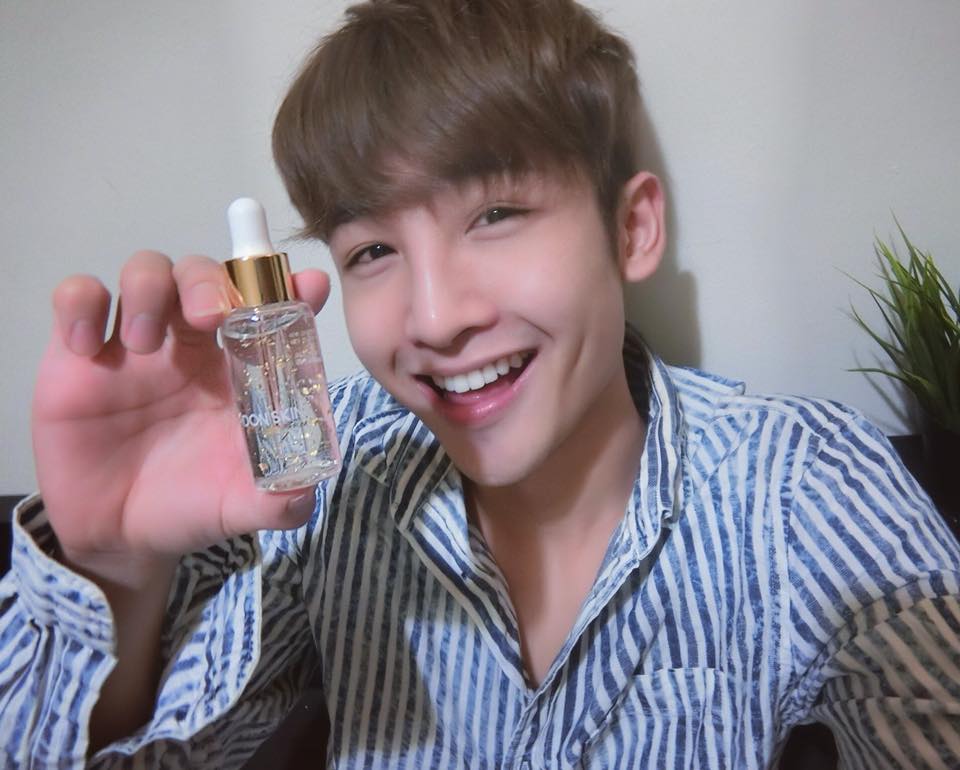Dermatologists and beauticians weigh in on which serums are best for dry skin, redness, oily skin and more.
Sometimes, it can feel like you need a beauty degree just to figure out what various skin care solutions actually do. Take serums, for instance. What makes them any different than moisturizers? And what are the benefits of adding this extra step to your skin care routine?
As it turns out, serums can help tackle a number of skin care concerns. Wondering what all the hype is about? TODAY Style sought the expertise of the folks who know serum best — dermatologists and aestheticians — to see why it might be worth adding this potent product to your routine.
What is serum?
If you think of your nightly skin care routine as a three course meal, serum is kind of like the main course. After kicking things off with an appetizer (aka cleansing your face), and before treating yourself to dessert (aka a nourishing moisturizer), you fill up on all the important nutrients (aka serum).
Much like a main course, serums can contain a range of useful nutrients — for your skin.
“Serums are skin care products that are designed to deliver high concentrations of specific active ingredients to the skin. There are many different types of serums on the market that perform different jobs, ranging from hydration to skin brightening,” said Dr. Joshua Zeichner, board-certified dermatologist and director of cosmetic and clinical research at Mount Sinai Hospital’s department of dermatology.
Most often, serums are clear, gel-based or liquid, and they tend to be less thick than a moisturizer. They’re typically applied before moisturizers to help lock in moisture.
“Often, a serum is able to hydrate more effectively than even the heaviest creams. The molecules are able to truly penetrate the skin and hydrate on the deepest level, while the heavier creams more so sit on those top layers. Hydrating serums do not necessarily replace your moisturizer, but can boost the hydrating effects of your moisturizer,” said celebrity esthetician Karee Hays.

Serum benefits
“In general, serums contain topical antioxidants including vitamin A, C and E. They also contain topical retinols and ingredients that even out skin tone. When layered underneath moisturizers, serums act as targeted treatment for wrinkles, pigmentation and redness,” said Dr. Angela J. Lamb, a board-certified dermatologist and associate professor at the Icahn School of Medicine at Mount Sinai’s department of dermatology.
But what type of serums should you look for specifically?
“The key is to look for serums that deliver a ton of botanicals, antioxidants and hydration (water!) — they can deliver a concentrated dose of nutrients, and when applied on just-cleaned skin, the serum will penetrate more deeply,” said Dr. Craig Kraffert, board-certified dermatologist.
Since the ingredients in serums can be pretty potent, consider any potential skin sensitivity before trying a new product.
“The active ingredient(s) in serums tend to be more concentrated and can occasionally cause irritation and dryness in those who have sensitive skin. It’s a good idea to layer a more substantial moisturizer with the serum if your skin tends to be on the sensitive or dry side,” said board-certified dermatologist and cosmetic surgeon in New York City Dr. Fran Cook-Bolden.
How to use serum
Everyone’s skin is different, but on average, you should give it about seven weeks to see how your skin responds to a new serum routine. Depending on the serum and the current state of your skin, you might even see initial results — like slightly more hydrated skin — in just a few days, according to Kraffert.
Generally, you should use a serum all over your face and neck twice daily, once in the morning and then again in the evening, before applying your moisturizer if you want to get the most bang for your buck, according to Lamb.
What serum should I use?
“There are lots of them out there, so choosing wisely is always a challenge. It’s best to assess the benefits of your current serum in order to guide your ongoing pursuit of products that are truly effective,” Kraffert said.
Theses potent solutions are some of the most common serums available:
Anti-aging serums
- Serum’s purpose: “Anti-aging serums help turn back the hands of time and slow down the aging process by delivering essential anti-aging ingredients to combat fine lines and wrinkles,” saidDr. Debra Jaliman, a board-certified dermatologist in New York City and author of the book “Skin Rules: Trade Secrets From a Top New York Dermatologist.”
- Skin types who should use it: Anti-aging serums are beneficial for all skin types, not just mature skin, and you can start using them as early as your 20s.
- Ingredients to look for: Retinol, caffeine, green tea, proteoglycans and hyaluronic acid (generally labeled as sodium hyaluronate).
- Don’t forget: “If you have dry skin and are going to use a retinoid in a serum, I would recommend starting with a low dose, .25% or so, to make sure your skin can tolerate it before moving up to a stronger dose,” Hays said.
Antioxidant serums
- Serum’s purpose: “Antioxidant serums help protect your skin from the free radicals you’re exposed to on a daily basis.They also aid in the prevention of fine lines and other visible signs of aging, and can heal and repair skin,” Jaliman said. Free radicals are unstable molecules that can damage your cells and cause premature aging.
- Skin types who should use it: Since we’re exposed to free radicals on a regular basis, antioxidant serums are ideal for all skin types. Just make sure to take a look at the ingredients to make sure a serum doesn’t include any potentially irritating ingredients for your skin type first. Fragrances, dyes, sulfates, and in some cases, citrus or mint can cause irritation in some.
- Ingredients to look for: Vitamins A, C and E, resveratrol, niacinamide, melatonin and L-Ascorbic acid.
- Don’t forget: “I typically recommend my patients apply vitamin C serums in the morning underneath their sunscreen for added protection against UV light,” Zeichner said.
Hydrating serums
- Serum’s purpose: Much like its name suggests, hydrating serums help infuse skin with extra moisture to supplement your nightly moisturizer.
- Skin types who should use it: Those with dry skin are ideal candidates for a hydrating serum, but oddly enough, oily skin types (and even acne-prone skin) can also benefit from some targeted hydration. “For very oily skin types, a hydrating serum is preferred. These products are designed to hydrate with minimal emollient residue,” Kraffert said. Both mature and young skin alike can use a hydrating serum.
- Ingredients to look for: Hyaluronic acid, peptides and Luminescine.
- Don’t forget: “No age is too young for the more hydration-centric serum. Hyaluronic peptide serums are safe for young acne-prone skin and can be a great oil-free option for dehydrated breakout-prone skin,” Hays said.
Color-correcting serums
- Serum’s purpose: “These serums perform an array of functions and can target skin issues like hyperpigmentation, enlarged pores and fine lines,” Jaliman said.
- Skin types who should use it: Those looking to even out skin tone or nix dark spots are ideal candidates for color-correcting serums. Skin resurfacing and exfoliating serums on the other hand, work well for those looking to smooth out skin and minimize pores.
- Ingredients to look for: Phytic acid, vitamin C, arbutin, kojic acid, azelaic acid, L-ascorbic acid and glycolic acid.
- Don’t forget: “Antioxidant serums will naturally brighten your skin, but you can also find these serums with added arbutin or kojic acid, which will aid in pigment suppression and skin brightening,” Hays said.
Originally from: Chrissy Callahan (Today.com)

